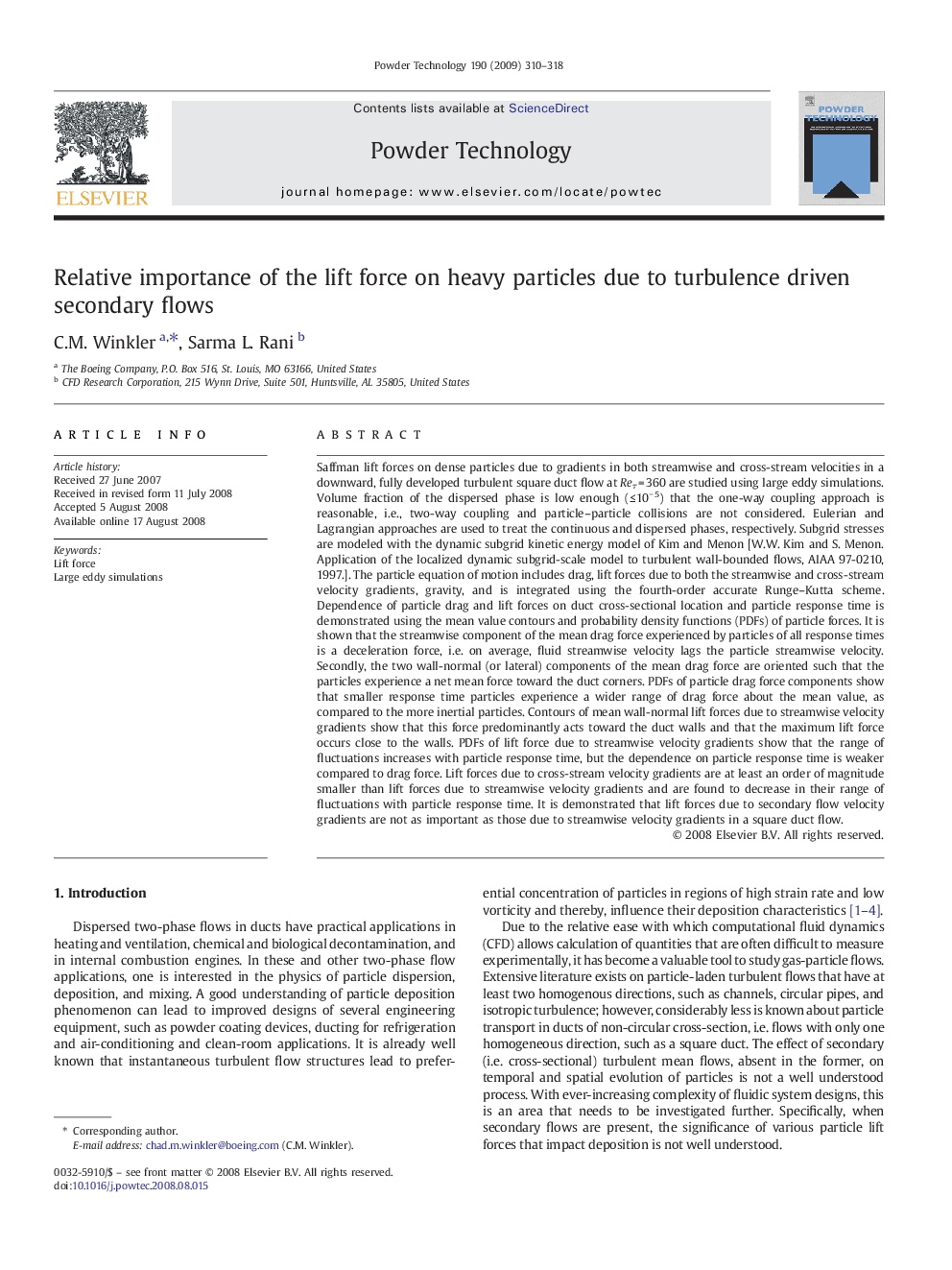| Article ID | Journal | Published Year | Pages | File Type |
|---|---|---|---|---|
| 238131 | Powder Technology | 2009 | 9 Pages |
Saffman lift forces on dense particles due to gradients in both streamwise and cross-stream velocities in a downward, fully developed turbulent square duct flow at Reτ = 360 are studied using large eddy simulations. Volume fraction of the dispersed phase is low enough (≤ 10− 5) that the one-way coupling approach is reasonable, i.e., two-way coupling and particle–particle collisions are not considered. Eulerian and Lagrangian approaches are used to treat the continuous and dispersed phases, respectively. Subgrid stresses are modeled with the dynamic subgrid kinetic energy model of Kim and Menon [W.W. Kim and S. Menon. Application of the localized dynamic subgrid-scale model to turbulent wall-bounded flows, AIAA 97-0210, 1997.]. The particle equation of motion includes drag, lift forces due to both the streamwise and cross-stream velocity gradients, gravity, and is integrated using the fourth-order accurate Runge–Kutta scheme. Dependence of particle drag and lift forces on duct cross-sectional location and particle response time is demonstrated using the mean value contours and probability density functions (PDFs) of particle forces. It is shown that the streamwise component of the mean drag force experienced by particles of all response times is a deceleration force, i.e. on average, fluid streamwise velocity lags the particle streamwise velocity. Secondly, the two wall-normal (or lateral) components of the mean drag force are oriented such that the particles experience a net mean force toward the duct corners. PDFs of particle drag force components show that smaller response time particles experience a wider range of drag force about the mean value, as compared to the more inertial particles. Contours of mean wall-normal lift forces due to streamwise velocity gradients show that this force predominantly acts toward the duct walls and that the maximum lift force occurs close to the walls. PDFs of lift force due to streamwise velocity gradients show that the range of fluctuations increases with particle response time, but the dependence on particle response time is weaker compared to drag force. Lift forces due to cross-stream velocity gradients are at least an order of magnitude smaller than lift forces due to streamwise velocity gradients and are found to decrease in their range of fluctuations with particle response time. It is demonstrated that lift forces due to secondary flow velocity gradients are not as important as those due to streamwise velocity gradients in a square duct flow.
Graphical abstractSaffman lift forces on dense particles due to gradients in both streamwise and cross-stream velocities in a downward, fully developed turbulent square duct flow at Reτ = 360 are studied using large eddy simulations. Dependence of particle drag and lift forces on duct cross-sectional location and particle size is demonstrated using the mean contours and probability density functions of particle forces.Figure optionsDownload full-size imageDownload as PowerPoint slide
